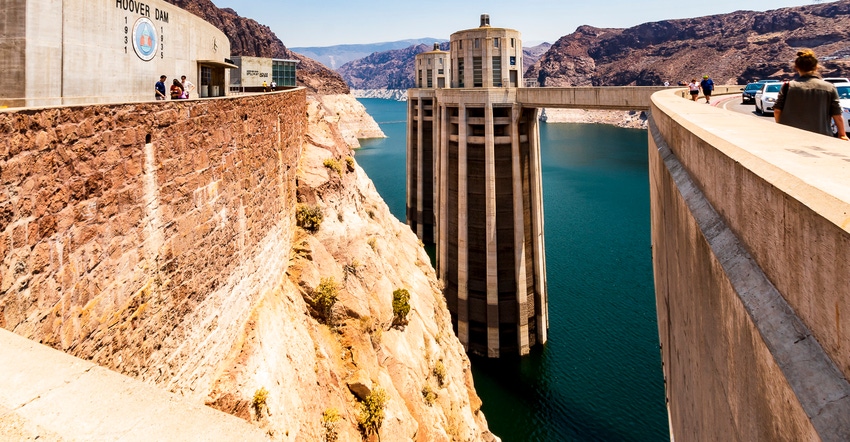
Arizona and Nevada will lose access to a combined 533,000 acre-feet of water from the Colorado River starting Jan. 1 under a set of negotiated water restrictions due to Lake Mead levels.
On Monday, Aug. 16, the U.S. Bureau of Reclamation made it official: Lake Mead will be managed next year under Tier 1 restrictions for the first time in history.
The news comes as Reclamation released its 24-month study of the Colorado River basin and its projections for annual operations of Lakes Mead and Powell. Releases from both reservoirs are determined by anticipated reservoir elevations, according to the federal agency.
For users who draw water from the Central Arizona Project, this means a cut of 512,000-acre feet of water. That means no more water for the agricultural pool – eliminating surface water supplies for growers in the center of the state.
Water shortages in the Colorado River system are expected to leave Lake Powell within 45 feet of minimum power pool by Jan. 1, 2022. Reclamation is moving water from upper basin reservoirs from New Mexico to Wyoming to slow the decline in Lake Powell levels and preserve hydroelectric power output from Glen Canyon Dam as long as possible.
Below Tier 1 threshold
Lake Mead on Jan. 1 is expected to fall to 1,065 feet elevation, 10 feet below its Tier 1 threshold and 25 feet below its drought contingency plan of 1,090 feet elevation. This is the first time ever that Lake Mead will have been managed under the Tier 1 shortage. The required shortage reductions are a result of Colorado River interim guidelines from 2007, the 2019 Lower Basin Drought Contingency Plan, and the U.S. water treaty with Mexico.
Under these agreements, Arizona loses about 18% of its annual apportionment of Colorado River Water, Nevada loses 7% of its annual take and Mexico loses 5% of its annual allotment from the river. California is not required to reduce its allocation of 4.4-million-acre feet under the existing restrictions.
Despite the restrictions elsewhere, the San Diego County Water Authority says the region "continues to have adequate supplies of water," while urging residents there to avoid wasting water.
California can continue to pump its full allocation from the Colorado River until Lake Mead reaches 1,045 feet in elevation, about 20 feet lower than it is today. At that time California must cut its take from the system by 200,000 acre-feet annually. Under those tier restrictions, Arizona will then see its allocation cut by 640,000 acre-feet annually while Nevada will see its annual allotment cut by 27,000 acre-feet.
About the Author(s)
You May Also Like






